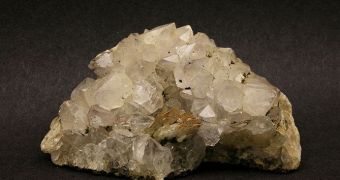In addition to being able to peer inside the human body, detect hazardous materials at the airport, and even look at the structure of atomic nuclei, X-rays may also be apt at promoting the formation of new crystals. A team of researchers at the Northwestern University has recently determined that the radiation can be used to create a new kind of crystal, which resembles charged cylindrical filaments. These structures are ordered like a bundle of pencils experiencing repulsive forces, which is something that scientists didn't know crystals could do.
The NU group adds that the finding could have significant implications for materials science, as well as for biology. Some experts have already proposed that this growth mechanism could also be at work naturally, inside the cytoskeleton filaments of cells. These structures control crucial aspects of the cells' lives, such as cellular division, as well as the migration of cancer cells throughout the body. Therefore, the team believes, that new knowledge could be used to create novel biomedical therapies for a host of conditions in the near future. Details of the work will appear in the upcoming, January 29 issue of the top journal Science.
“This is a very intriguing and astonishing result. The filaments are charged so one would expect them to repel each other, not to organize into a crystal. Even though they are repelling each other, we believe the hundreds of thousands of filaments in the bundles are trapped within a network and form a crystal to become more stable,” the senior author of the new paper, expert Samuel I. Stupp, explains the action of the X-rays. He is the professor of chemistry, materials science and engineering, and medicine, at the university's Board of Trustees.
The new discovery was made by accident, as the scientists were investigating peptide nanofibers at the US Department of Energy's (DOE) Argonne National Laboratory (ANL). The group used X-rays to look at the structure of the nanoparticles, and discovered that applying X-rays on the solution turned it into a crystal. The effect ceased as soon as the energetic light was turned down. The team also says that not much damage came to the materials following the process, which means that it holds great promise for the future.

 14 DAY TRIAL //
14 DAY TRIAL //